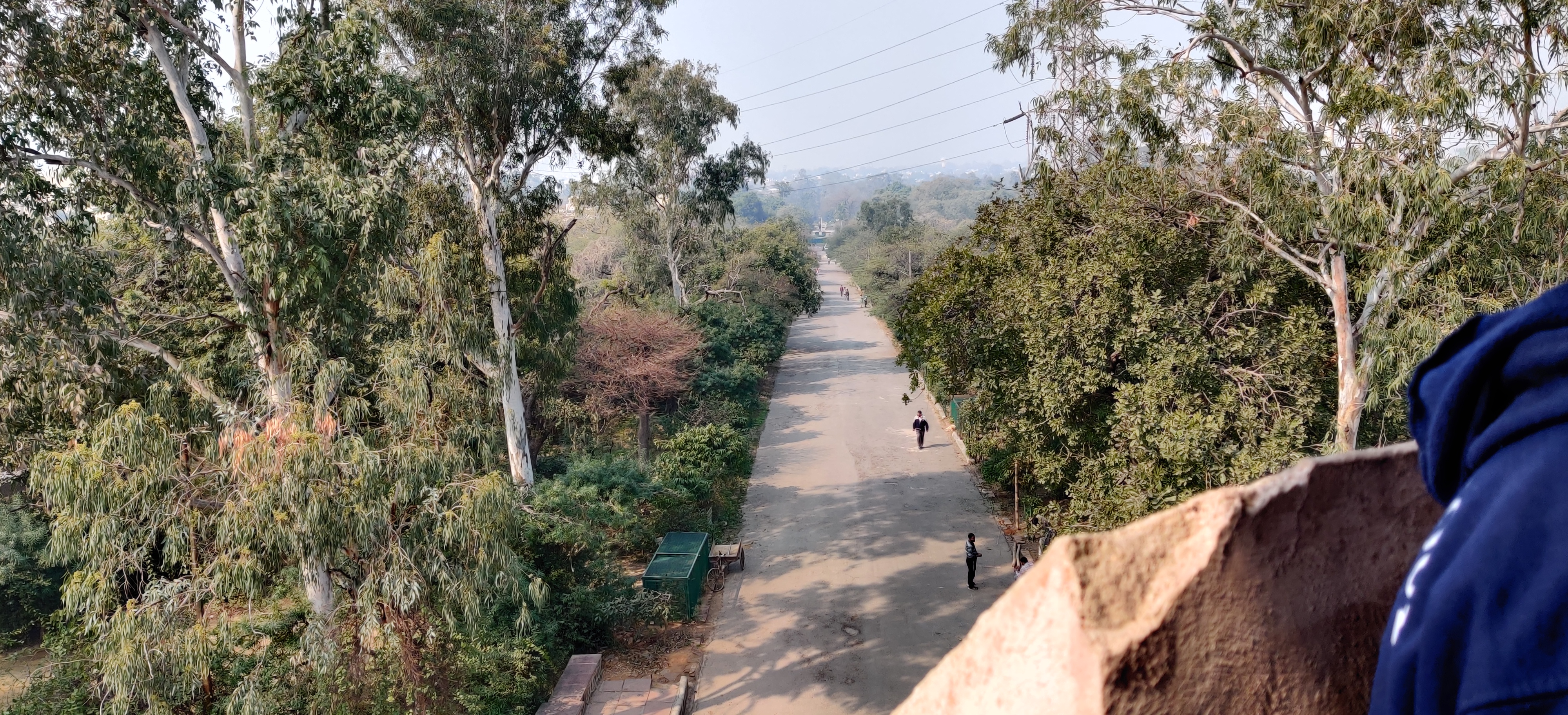A Dreamy Romantic Getaway: Eleven Minutes of Paradise in 7 Beautiful Cities
By Amogha Sharma, Undergraduate Batch of 2023 Of the countless cities which crowd our maps, some

The First Heritage walk by the History society for the year took place recently and had about 10 students, accompanied by Prof. Sanjyukta Datta, undertake an exploration in and around the Northern Ridge. We hope the experiences shared by Nandan Kaushik, Undergraduate Batch of 2022, accompanied by the spectacular visuals provided by Surabhi Sanghi, Undergraduate Batch of 2020, inspires you to sign up for the next Heritage Walk organised by the society!
We had just entered the ridge area through the gate opposite Delhi University at around 11 in the morning and were looking forward to the day ahead. As we approached the Flagstaff tower, our first stop of the day, Professor Datta informed us that the local Archaeological Survey of India (ASI) team was waiting for us. The Flagstaff tower was built in the early 19th century and was used to hoist the British flag all the way up to 1947. This was where women and children hid during May 1857 when the Meerut mutineers had taken the city. They later fled from there to Ambala.

The ASI officials allowed us access into the structure. The inside is a single circular room with a spiral staircase in the centre, leading to a first-floor balcony, and finally a terrace on top with a 360-degree view. Taking some group photos here, we walked down the path to a guardhouse, from the Tughlaq era. It is a remnant from the time when the ridge was Firoz Shah Tughlaq’s hunting grounds, and he had a hunting lodge here (evidence of which survives).

We soon moved on to the Chauburji. This structure takes its name from the four domes that had adorned it in the past, only one of which currently survives. It has a large open area on the ground floor, and the first floor is an open-to-sky mosque with a large platform in the centre. In the last few years ASI has managed to restore what is left of the structure. Again, thanks to our ASI friends, we were allowed to go in and explore. The mosque on top of the structure has faded inscriptions around the doorway and the motifs have deteriorated over time, but the overall charm remains.

Professor Datta pulled out a book on the 1857 events in Delhi, and showed us the photo of the Chauburji from soon after that. It looked quite different from the photo there, with half the building missing, and the structure was quite different. We decided to see if we could identify which part of that mosque coincided with the existing structure. After some effort, we were able to piece together which part corresponded to which, through inference. Here the ASI officials took their leave and we headed on.

We then left the ridge and headed to Pir Ghaib, that combined both eras of monuments; a Tughlaq tower that was associated with the myth of a 19th century disappearing Djinn, passing the sign to Hindu Rao Civil Hospital on the way. Hindu Rao was a Marathi and brother-in-law to the Scindias of Nagpur, who had broken away and moved to Delhi. In 1835, William Frazer, a British official, was murdered, and his house on the ridge was acquired by Hindu Rao. The house acted as the headquarters to the British on the ridge in 1857, and later became a hospital (we passed the building a couple of stops later, and the current structure bears little to no resemblance to the early 19th century one). It was in this vicinity Timur, the Turkic warlord, is said to have pitched his tent when in Hindustan,

Pir Ghaib sits in the middle of modern residences and looks completely out of place, yet comfortable in its unfamiliarity, like old furniture in a fancy new apartment.

Finally, we arrived at the Ashoka pillar. Erected by Ashoka in Meerut, this was one of two pillars brought to the Delhi region by Firoz Shah Tughlaq. It contains a series of lines in Brahmi from the time of Ashoka, with a shorter, later inscription below. It was said to have been blown up around the middle of the 1710s, and was later put back together and deciphered by the British in the 19th century.
Moving from the early medieval to the modern, the last stop of the day, the mutiny memorial. Built-in the 1860’s, it provides a timeline of events for the British recapture of Delhi, as well as acting as a memorial to those who died on the British side during 1857. Later some of us realised that if we hadn’t known better, it could have looked like a church from a distance. Built at a height, it dominates the surroundings. This was also the area the British setup camp during their retake of the city.
With the walk now over, we all headed our separate ways. Most of us headed back to campus. It took a while for us to realise that the walk had been so long, we had missed lunch. But it didn’t matter, in a rather short span of time we had managed to experience bits of history from different eras! The enthralling experience had left us feeling satiated.
Nandan and Surabhi are both pursuing History at Ashoka and are active members of the History Society.